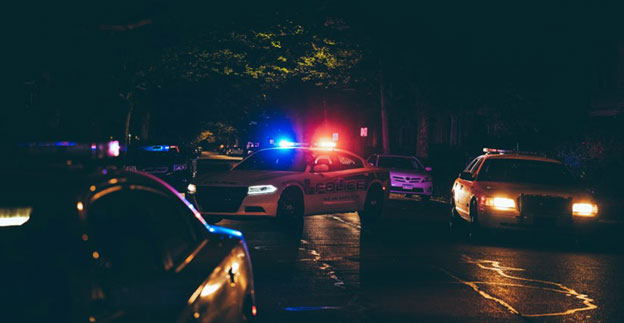
The world of crime scene investigation and forensic expert’s role is far more complex than portrayed on television. A successful investigation hinges on the meticulous work of forensic experts, including forensic investigators, forensic scientists, and specialized technicians like latent fingerprint examiners and forensic photographers. Their combined expertise ensures the collection, preservation, and analysis of crucial evidence, ultimately contributing to the solving of crimes and the pursuit of justice.
This article delves into the key responsibilities of these professionals, focusing on evidence collection, documentation, and maintaining the integrity of the crime scene.
The Crucial Role of Forensic Investigators at the Crime Scene
Forensic investigators, also known as crime scene investigators (CSIs), are the first responders to a crime scene after law enforcement secures the area. Their primary role is to systematically document and collect evidence, ensuring its integrity throughout the entire process. This requires a combination of scientific knowledge, meticulous attention to detail, and strong observational skills. The CSI team often includes specialists, such as fingerprint analysts or forensic specialists in other areas, each contributing their unique expertise.
Evidence Collection: A Systematic Approach
The collection of evidence is a critical first step in any crime scene investigation. Forensic investigators employ various search methods, such as grid searches or spiral searches, to ensure no potential evidence is overlooked. The type of evidence collected varies greatly depending on the nature of the crime. This can include:
Proper Handling and Chain of Custody
The proper handling and preservation of evidence are equally important as its collection. Each piece of evidence must be carefully documented, packaged, and labeled, maintaining a strict chain of custody to ensure its admissibility in court. Failure to maintain the chain of custody can compromise the integrity of the evidence and potentially lead to its inadmissibility. This is a critical aspect of the forensic investigator’s role. Even a fingerprint analyst must be meticulous in following these protocols.
Documentation: A Comprehensive Record
Thorough documentation is essential for reconstructing the crime scene and presenting a strong case in court. Forensic investigators utilize various methods to document the scene:
Maintaining Crime Scene Integrity: A Paramount Concern
The Role of Specialized Forensic Experts
Beyond the general forensic investigator, many specialized roles contribute to a successful investigation. Fingerprint analysts, for example, are crucial in identifying individuals through their fingerprints. Their expertise in fingerprint analysis and comparison is vital in linking suspects to crime scenes. Forensic scientists play a vital role in analyzing biological evidence, such as DNA, and other trace evidence. Forensic analysts may specialize in specific areas, such as toxicology or trace evidence analysis. Even a fingerprint technician plays a crucial role in the process, ensuring the proper collection and preservation of fingerprint evidence.
The Importance of Collaboration and Teamwork
Crime scene investigation is a collaborative effort. Forensic investigators, forensic scientists, fingerprint examiners, latent print examiners, and other specialists work together, sharing their expertise to build a comprehensive case. Effective communication and coordination are essential for a successful outcome. The forensic expert’s role is not just about individual skills; it’s about teamwork and the seamless integration of multiple disciplines.
The Future of Crime Scene Investigation
Technology continues to advance the field of forensic science. New techniques and technologies are constantly being developed, improving the accuracy and efficiency of crime scene investigations. This includes advancements in DNA analysis, digital forensics, and other areas. The forensic expert of the future will need to adapt to these changes, embracing new technologies and techniques to maintain their effectiveness.
Conclusion:
The work of forensic experts, from crime scene investigators and technicians to specialized fingerprint analysts, is often unseen but profoundly impactful. Their meticulous attention to detail, scientific expertise, and commitment to preserving the integrity of evidence are critical to the successful prosecution of criminals and the exoneration of the innocent. They play a vital role in ensuring that justice is served. However, mistakes and misinterpretations of evidence can happen, which makes it crucial that their work is rigorously scrutinized and reviewed for accuracy and integrity, ensuring that innocent individuals are not wrongfully charged or convicted of crimes they did not commit.
Sources:
by Kourosh Nikoui | December 30, 2024 | Crime Scene Investigation
Forensic Practitioner and Specialist Kourosh Nikoui, Principal Consultant and CEO of Nikoui & Associates, Forensic Identification Services & Consulting, Inc., has over 38 years of full-time experience in forensic science and criminal justice with various law enforcement agencies, government and private entities. Mr. Nikoui, a court-qualified expert, is a Certified Latent Print Examiner, Certified Senior Crime Scene Analyst, and Certified Forensic Photographer by the International Association for Identification. He has testified as an expert witness over 150 times in California Superior and U.S. Federal Courts, processed evidence in over 30,000 criminal and civilian cases, and served as a consultant to numerous law enforcement agencies. Mr. Nikoui holds a BFA degree from USD and is an active member of multiple forensic science organizations. He can be reached directly by calling (866)439-6753 or by email at [email protected]. Please visit Mr. Nikoui’s website at www.nikouiandassociates.com